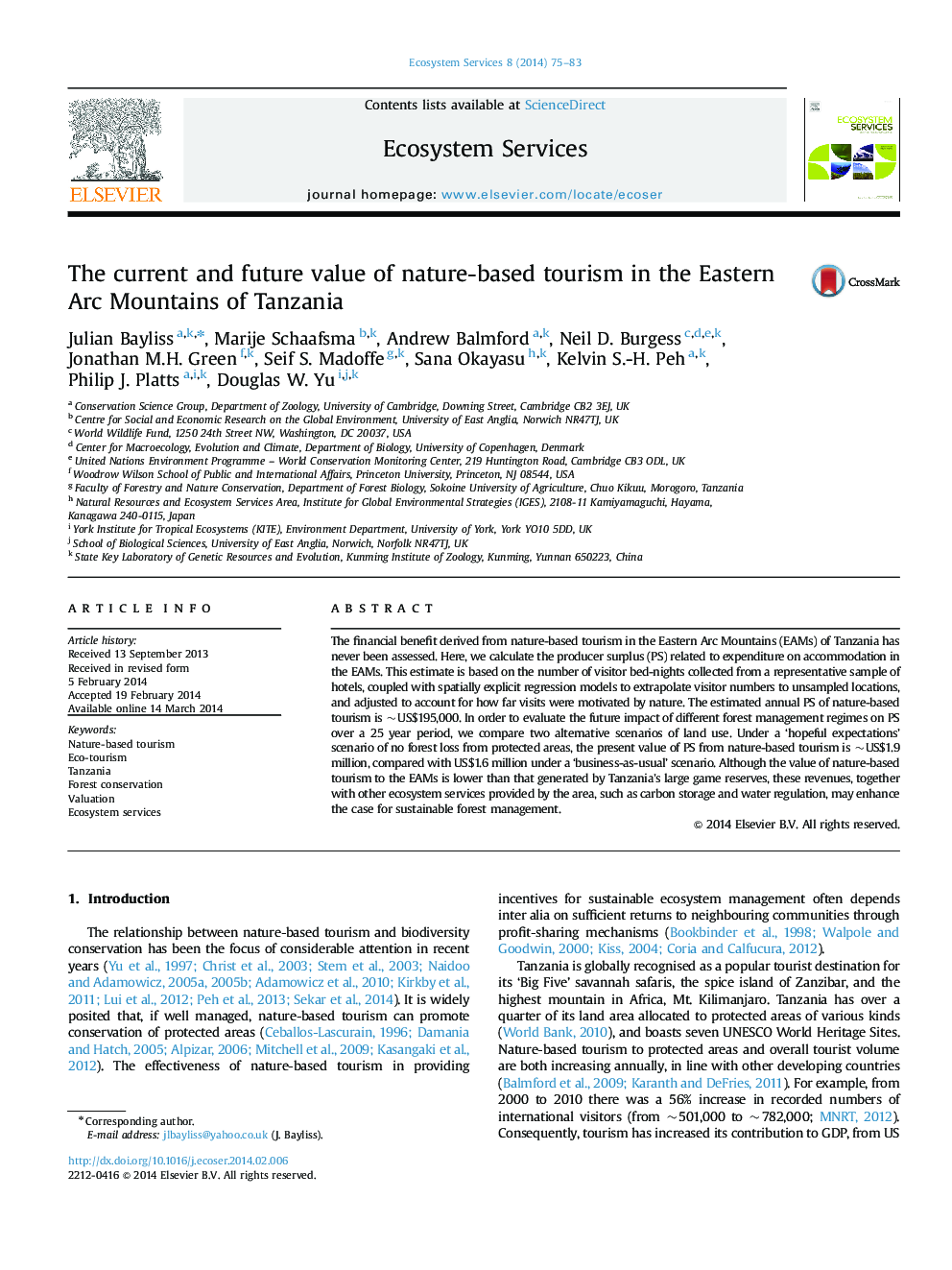| کد مقاله | کد نشریه | سال انتشار | مقاله انگلیسی | نسخه تمام متن |
|---|---|---|---|---|
| 108101 | 161853 | 2014 | 9 صفحه PDF | دانلود رایگان |
• Nature-based tourism is measured by calculating the present value of Producer Surplus (PS), based on the number of visitor bed-nights.
• Tanzanian visitors to the EAMs are positively predicted by high population density and negatively by close proximity to major roads.
• International visitors to the EAMs are positively predicted by higher accommodation quality and close proximity to forest.
• Under a scenario of no-forest-loss, the present value of PS from nature-based tourism is ~US$1.9 million (discount rate of 15%).
• Under a business-as-usual scenario the present value of PS from nature-based tourism is US$1.6 million (discount rate of 15%).
The financial benefit derived from nature-based tourism in the Eastern Arc Mountains (EAMs) of Tanzania has never been assessed. Here, we calculate the producer surplus (PS) related to expenditure on accommodation in the EAMs. This estimate is based on the number of visitor bed-nights collected from a representative sample of hotels, coupled with spatially explicit regression models to extrapolate visitor numbers to unsampled locations, and adjusted to account for how far visits were motivated by nature. The estimated annual PS of nature-based tourism is ~US$195,000. In order to evaluate the future impact of different forest management regimes on PS over a 25 year period, we compare two alternative scenarios of land use. Under a ‘hopeful expectations’ scenario of no forest loss from protected areas, the present value of PS from nature-based tourism is ~US$1.9 million, compared with US$1.6 million under a ‘business-as-usual’ scenario. Although the value of nature-based tourism to the EAMs is lower than that generated by Tanzania׳s large game reserves, these revenues, together with other ecosystem services provided by the area, such as carbon storage and water regulation, may enhance the case for sustainable forest management.
Journal: Ecosystem Services - Volume 8, June 2014, Pages 75–83
